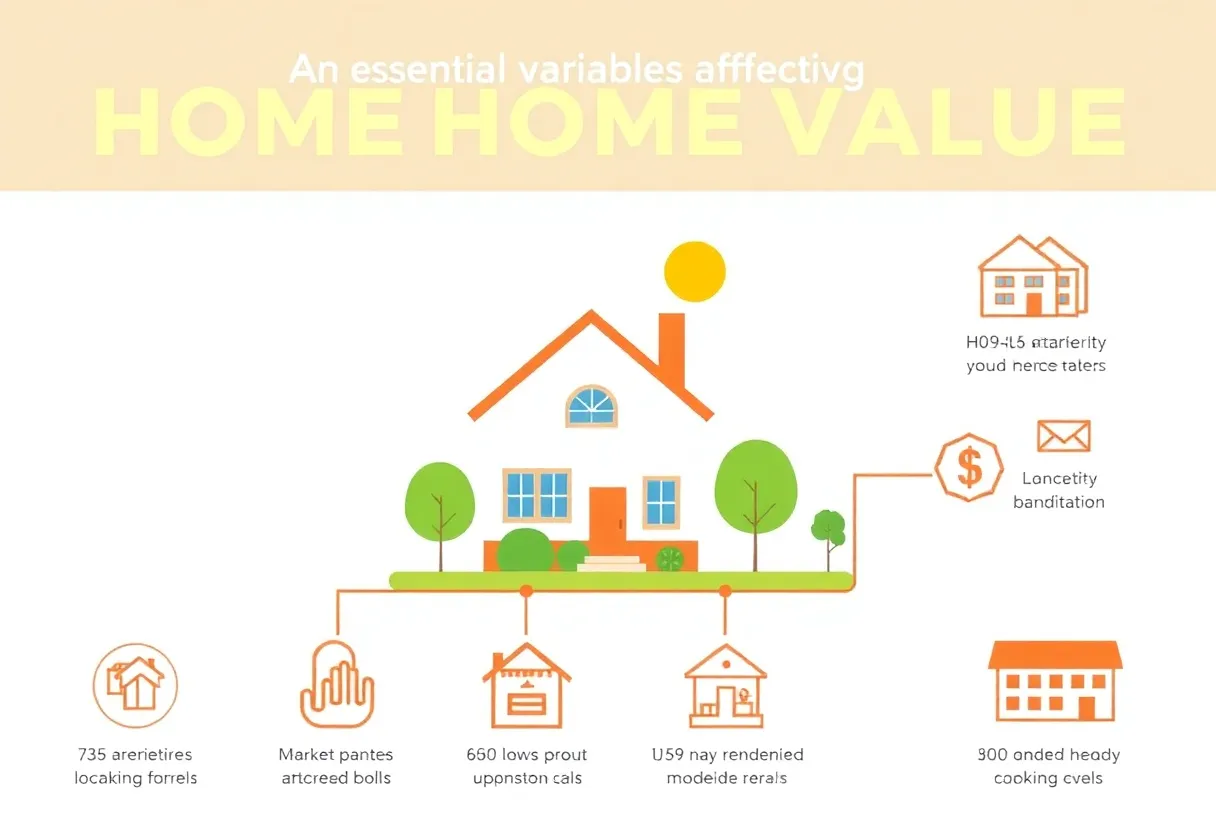How to Analyze Variables That Affect Your Home’s Value Before Buying
Introduction
Determining the value of a home before purchase is a critical step in making an informed investment. From market trends to property features, multiple variables influence a property’s worth. Understanding these factors allows prospective buyers to assess whether a home is priced appropriately and aligns with their financial goals.
This comprehensive guide will walk through the essential variables affecting home value and provide methodologies to analyze them effectively. Maintaining clarity and focus on core facts, the goal is to equip potential buyers with a structured approach for evaluating property value.
Fundamental Variables Influencing Home Value
Location
Location remains the most significant determinant of property value. It influences desirability, accessibility, and future growth potential. Factors within location include:
- Neighborhood Quality: Safety, cleanliness, and overall upkeep impact desirability.
- Proximity to Amenities: Access to schools, parks, shopping centers, and transportation hubs increases value.
- Economic Development: Areas with ongoing development attract higher prices.
- Crime Rates: Lower crime correlates with higher property values.
Analyzing location involves comparing the neighborhood’s historical appreciation, current market trends, and future development plans.
Market Conditions
The broader real estate market significantly influences home values. Key markers include:
- Supply and Demand: High demand with limited supply drives prices upward.
- Interest Rates: Lower rates make borrowing easier, elevating home prices.
- Market Cycles: Recognizing whether the market is in a boom, correction, or downturn aids in valuation.
Monitoring local market data and economic indicators helps anticipate fluctuations and determine if a home is priced fairly.
Property-Specific Characteristics
Characteristics inherent to the property itself directly impact value. These include:
- Size and Floor Space: Larger homes typically command higher prices.
- Number of Bedrooms and Bathrooms: Greater count often increases value, especially for family homes.
- Property Age and Condition: Newer, well-maintained homes tend to be valued higher.
- Layout and Functionality: Open floor plans, logical flow, and recent upgrades contribute positively.
It is essential to evaluate whether the property meets market standards for its segment.
Exterior and Lot Features
Additional factors impacting value include:
- Land Size and Usability: Larger, usable outdoor space enhances appeal.
- Landscaping and Curb Appeal: Attractive exteriors increase perceived value.
- Views and Privacy: Homes with desirable views or seclusion are more valuable.
Analyzing External and Contextual Variables
School District Quality
Proximity to highly-rated schools is a strong premium factor. Good schools typically increase property demand, raising the home’s value. Analyze school district rankings and recent improvements or declines.
Future Development and Zoning Changes
Potential zoning adjustments or new developments can alter a property’s value trajectory. Research local planning proposals about commercial, industrial, or residential projects that may impact the neighborhood positively or negatively.
Environmental and Geographic Factors
Environmental stability influences desirability. Consider:
- Flood Zones: Homes in flood-prone areas tend to have lower values unless mitigated.
- Earthquake or Natural Disaster Risks: Areas susceptible to natural disasters often have lower valuations unless mitigations are in place.
- Climate and Air Quality: Clean air and moderate climate tend to boost home desirability.
Data Collection and Quantitative Analysis
Comparative Market Analysis (CMA)
A comparative market analysis involves reviewing recent sales of similar properties within the same neighborhood. Focus on properties sharing similar size, age, condition, and features. This approach provides a realistic estimate of current market value.
Utilizing Public and Private Data Sources
Sources include property databases, tax assessor records, and real estate listings. Analyze historical data to understand price trends and fluctuations over time.
Adjustments for Variations
When comparing properties, account for differences through adjustments. For example, if a comparable property has an extra bathroom, assign an approximate value increment to adjust for this difference. This process enhances accuracy in valuation.
Qualitative Analysis and Market Sentiment
Neighborhood Trends
Observe influx of new residents, renovations, or commercial investments as signs of neighborhood improvement, likely elevating property value.
Community Planning and Infrastructure Projects
Evaluate local government plans—new transportation links, parks, or amenities can significantly enhance property desirability.
Condition and Aesthetic Appeal
Homes that are well-maintained, modernized, and visually appealing hold higher value. Functional updates and cleanliness are signals of good upkeep, influencing price perception.
Legal and Regulatory Variables
Property Title and Zoning Regulations
Clear titles and adherence to zoning laws prevent future legal complications. Changes in zoning laws can either restrict or enhance use, affecting valuations.
HOA and Community Restrictions
Homeowners associations impose covenants, rules, and fees. While these can maintain neighborhood standards, they also add costs and restrictions that influence value.
Strategies for Effective Variable Analysis
Develop a Checklist
Create a comprehensive list of all relevant variables. Use this for systematic assessment during property visits and research.
Consult Multiple Data Points
Rely on a blend of quantitative data (market prices, demographics) and qualitative insights (neighborhood dynamics) for a balanced view.
Engage Experts When Necessary
Real estate agents, appraisers, and urban planners can provide valuable insights. Their expertise helps interpret complex variables and predict future trends.
Conclusion
Effectively analyzing variables that influence home value involves a multi-layered approach. It requires evaluating location, market conditions, property features, external factors, and legal considerations. Accurate assessment helps determine fair pricing, avoid overpaying, and ensures sound investment decisions.
Prioritize data accuracy and current market intelligence. Apply a structured, facts-driven methodology to navigate the complex landscape of real estate valuation. This disciplined approach empowers buyers to make confident, well-informed decisions that align with their financial goals.
Author: STAFF HERE NEW YORK WRITER
The NEW YORK STAFF WRITER represents the experienced team at HERENewYork.com, your go-to source for actionable local news and information in New York, the five boroughs, and beyond. Specializing in "news you can use," we cover essential topics like product reviews for personal and business needs, local business directories, politics, real estate trends, neighborhood insights, and state news affecting the area—with deep expertise drawn from years of dedicated reporting and strong community input, including local press releases and business updates. We deliver top reporting on high-value events such as New York Fashion Week, Macy's Thanksgiving Day Parade, and Tribeca Film Festival. Our coverage extends to key organizations like the Greater New York Chamber of Commerce and United Way of New York, plus leading businesses in finance and media that power the local economy such as JPMorgan Chase, Goldman Sachs, and Bloomberg. As part of the broader HERE network, including HEREBuffalo.com, we provide comprehensive, credible insights into New York's dynamic landscape.





